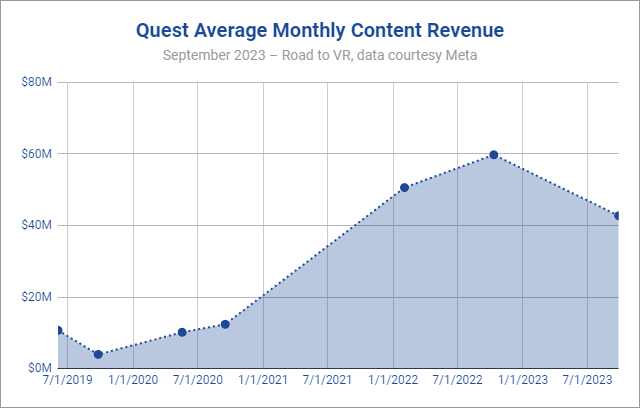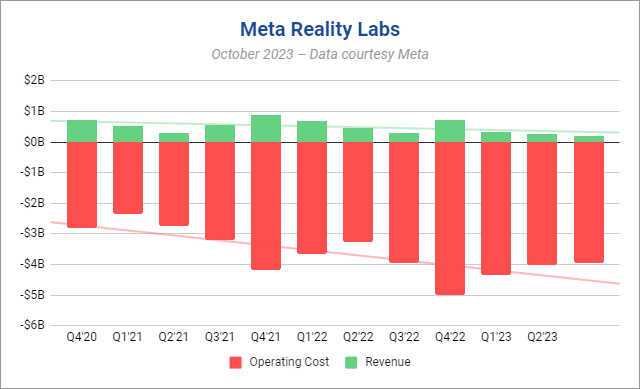Somehow another year has come and gone. 2024 will mark the 13th year that we’ve been following this XR journey here at Road to VR. With an eye on that long-term perspective, it’s once again time to reflect on the biggest stories of the last year and to talk about what’s on the horizon.
Apple Announces Vision Pro
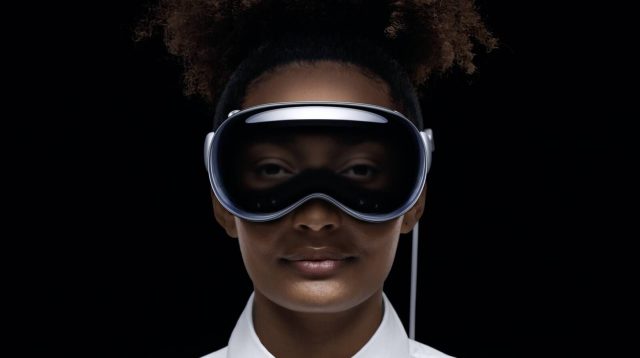
The News
Apple announced is Vision Pro headset in June of 2023 marking the company’s first public step into the XR headset space. Apple also boldly announced the headset’s staggering $3,500 price, despite a launch date set for nearly a year later.
The headset, a mixed reality device that’s centered around AR, notably excludes any kind of motion controller—the staple input method for every major XR headset on the market today. Instead a ‘look-and-tap’ system relying on eye and hand-tracking is the core input method, and by all accounts (including mine) it works very well.
What it Means for 2024
The first article about Apple that I ever wrote on Road to VR was this one in 2014 about the company filing a job posting seeking someone with experience in AR and VR. 10 years later, Apple is finally about to launch its first headset.
While Vision Pro has yet to launch, it has certainly been the most talked about story in 2023. Within in the industry it’s hard to find any conversation about the future of XR that doesn’t inevitably involve Apple. That tends to happen when the tech company titan announces that it will take a firm step into the space.
While nobody can know yet how big the headset’s impact will be, it has already sparked debates about the future of the XR industry as a whole. Apple’s decision to focus on hand-tracking input instead of using controllers essentially means the bulk of VR applications built to date won’t work with the headset. That forces developers to choose to focus on this brand new and very expensive platform with the hope that it grows rapidly, or to stick with the established market currently dominated by Meta.
Vision Pro isn’t exactly revolutionizing XR hardware (though the external display is pretty cool), but its real advantage stands to be a mature software platform that’s easy to use and easy to develop for.
At $3,500, Vision Pro isn’t going to sell many units, but it’s clear that Apple will aim to drive costs down over time while maintaining the same quality of the experience.
In the near term that means the headset’s biggest impact is very likely to be on Meta, since up to this point the company has essentially been able to write the rules of the standalone XR headset era. The company will now have an equally large peer whose moves in the market can’t be ignored.
If you recall, Zuckerberg specifically got Meta into XR because he wanted to free his company from the grip of Apple and Google (the prevailing gatekeepers of the smartphone era). So you can bet he isn’t going to stand idly by while Apple takes over the XR market.
While Apple’s entrance into XR represents a risk to Meta, in the long term the competition is very likely to grow the industry as a whole, making it better and more accessible for end users.
Sony Launches PlayStation VR 2
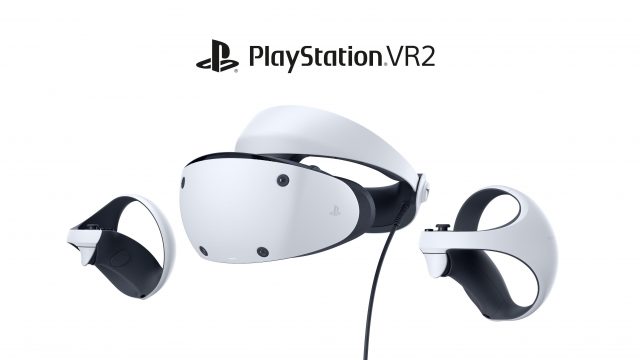
The News
After uncertainty about the company’s commitment to VR years after the launch of its first PSVR headset in 2016, Sony finally doubled down with PSVR 2. The headset has some wholly unique capabilities not seen on other consumer VR headsets, like eye-tracking, head-haptics, and adaptive triggers.
The headset also launched alongside Horizon Call of the Mountain, the first native VR game based on one of Sony’s major first-party IPs.
What it Means for 2024
Though the headset seemed to come out of the gate with strong momentum, by the end of 2023 PSVR 2 doesn’t feel like it has garnered significant traction. Despite a handful of exclusive games, the platform feels like it has the same problem as PC VR—the dominance of Quest has meant the vast majority of games are built for Meta’s headsets first, then ported to PSVR 2 and PC VR.
That’s meant a dearth of unique, high quality content for PSVR 2 (amplified by a lack of backwards support for original PSVR games). Combine that with the price difference between PSVR 2 and Quest 2 (along with the need to also own a PS5), and it’s clear why Sony’s headset seems to be struggling.
It hasn’t helped that after a strong launch, Sony doesn’t seem to be giving the headset much attention. Outside of a few game announcement presentations, it doesn’t look like the company has focused heavily on marketing the headset over the last six months, nor has it announced any major new native VR titles coming to the headset.
If Sony doesn’t kick things into gear with PSVR 2 in 2024, there’s a real chance the platform could end up on life-support.
HTC Launches Vive XR Elite
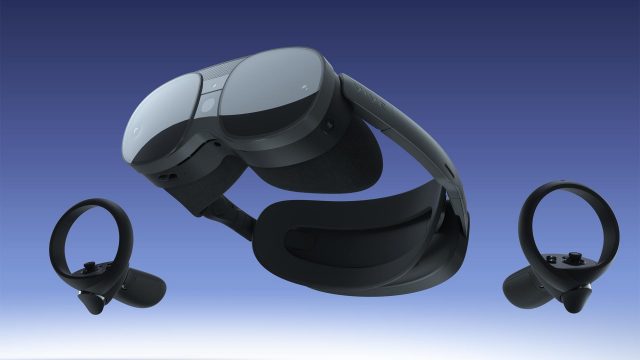
The News
HTC launched its first real competitor to Meta’s Quest line earlier this year with a renewed effort toward getting top games onto its platform (a challenge the company long struggled with while trying to gain a foothold with its Viveport platform for PC VR).
However, Vive XR Elite’s $1,100 price-point put it more in line with Meta’s Quest Pro which was initially priced at $1,500 before Meta undercut HTC by dropping it to $1,000.
What it Means for 2024
Similar to Quest Pro, Vive XR Elite has struggled to find a strong position within the market considering its price and use-cases. Ostensibly it’s a headset that’s good for playing standalone VR and MR games, but there isn’t enough added value from the headset’s emphasis on still-immature mixed reality use-cases when put next to a $300 Quest 2 that has a much stronger game library. Quest Pro suffers from the same issue and it too has seemingly been supplanted by the more affordable Quest 3.
That leaves HTC to fall back to the enterprise sector, the one place where it has long had a strong reputation.
Meta has started and stopped its enterprise-focused XR programs far too often to be considered a reliable partner for large business activations. HTC has stepped up to the plate to offer an enterprise platform that ticks the most important boxes for larger business use-cases, including fleet management software, and enterprise-focused security.
But that means that HTC remains stuck where it essentially has been for the last few years; unable to compete in the consumer space because of Meta’s hardware subsidy. We don’t see that changing in 2024 unless HTC brings something disruptive to the table and backs it up with perfect execution.
Meta Cuts Quest Pro Price Significantly
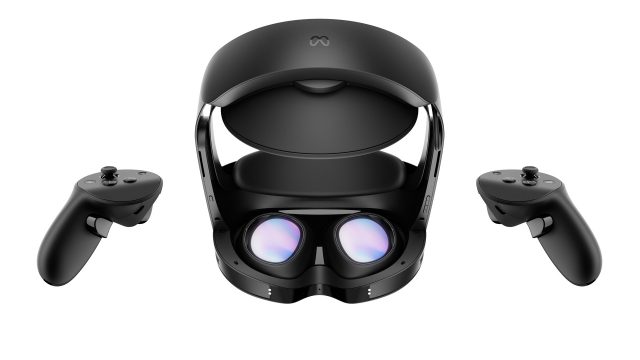
The News
Quest Pro launched in late 2022, positioned as a device that would transform professional workflows. At $1,500 it’s the most expensive headset the company has ever sold. Less than 6 months after it launched, Quest Pro’s price was considerably and permanently reduced to $1,000.
What it Means for 2024
Meta clearly realized the headset simply didn’t provide enough value to be priced at $1,500. Though the hardware was quite impressive, I noted in my review that Quest Pro struggled with focus—it played games better than Quest 2, but lacked key apps and clearly defined use-cases that made its mixed reality capabilities truly matter.
At least from the outside, Quest Pro feels like a real stumble for Meta. Not only because of the big price but, but also because the $500 Quest 3 released not long after in many ways outclasses Quest Pro while significantly undercutting its price.
Meta is still selling Quest Pro but it isn’t clear how enthusiastic the company is about the Quest Pro’s future as a product line. We wouldn’t be surprised if there’s no Quest Pro 2 in 2024, especially while Meta waits to see the market impact of Apple’s Vision Pro.
Bigscreen Launches Beyond Headset
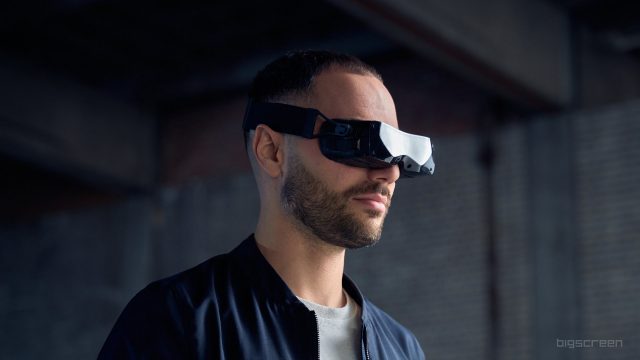
The News
The PC VR headset Bigscreen Beyond launched in 2023 with its size, weight, and custom-fit as a major differentiator compared to what else is available in the PC VR landscape. At $1,000 for the headset (not including controllers or tracking beacons), the headset is firmly geared toward hardcore VR users.
What it Means for 2024
Bigscreen Beyond is a fascinating experiment that’s worth watching in 2024. For one, it’s the first major headset to offer a completely custom-fit facepad and IPD adjustment for every customer. And its focus on minimizing size and weight shows what’s possible with the VR headset form-factor today (and what tradeoffs it takes to get there).
Moreover, Bigscreen Beyond stands to answer an important question: is the market of PC VR users still large enough to support a company making a high-end dedicated PC VR headset? If Bigscreen can subsist on the demand for tethered PC VR headsets as it stands today, it will be proof that PC VR can sustain itself as an enthusiast-driven niche within the increasingly standalone-dominated XR market.
Roblox, Assassin’s Creed, & Asgard’s Wrath 2 Launch on Quest
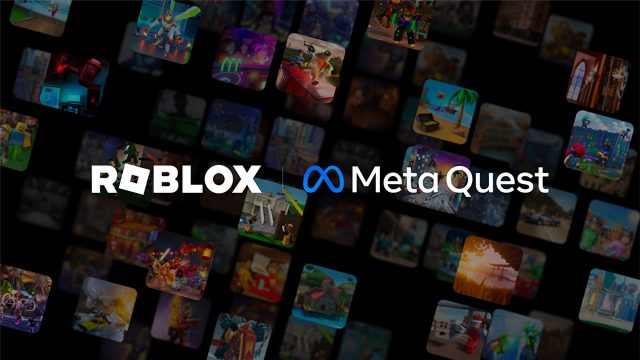
The News
Despite being the XR market’s dominant content platform, Meta is still struggling to get a critical mass of content into the store to attract and retain a mainstream VR audience. 2023 saw the launch of Roblox, Assassin’s Creed, and Asgard’s Wrath 2, which are moving things in the right direction.
What it Means for 2024
Roblox is an undeniable force in social and UGC gaming. It has quietly offered PC VR support for years, but that didn’t seem to find much traction (perhaps a demographic mismatch between PC VR players and Roblox players). But in 2023 the company revamped its VR support and brought it to Quest, making VR content on Roblox much more accessible.
It’s unclear how much VR usage Roblox is actually actually seeing, but simply having the name of the platform in the Quest content library is significant considering the platform plays in the same weight class as the likes of Fortnite.
And Meta added another well-known name to its library in 2023: Assassin’s Creed Nexus VR, which brings the core gameplay from the storied franchise to VR in a relatively successful way, and marks Ubisoft’s return to VR game development after several early attempts.
Though much less recognizable outside of the VR space, Meta also released Asgard’s Wrath 2, which many feel is the first Quest game to have the scope of a major AAA non-VR game.
These three heavy hitters certainly bolster the Quest library when it comes to content you can really sink your teeth into. But I’m not seeing evidence that Meta will solve its content volume issue in 2024—which is the need for a consistent pipeline of attractive content to keep people coming back to their headset and to attract new users.
ByteDance Wavering on Pico Commitment
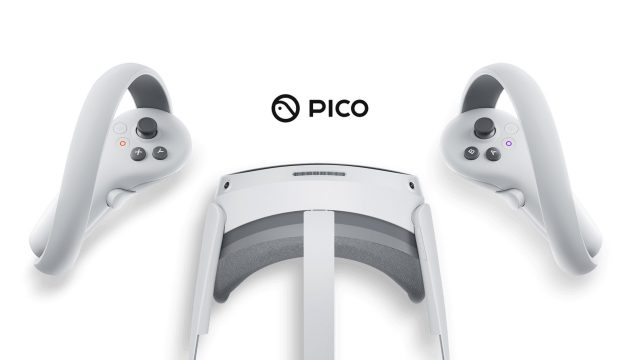
The News
TikTok parent company ByteDance bought VR headset maker Pico back in 2021, ostensibly to compete with Meta in the growing XR space. But not more than two and a half years later the company is reportedly laying off hundreds of its staff as it pivots its strategy.
What it Means for 2024
Pico was seemingly right on the cusp of breaking into the consumer standalone VR headset market as a proper alternative to Quest. With decent hardware and an increasingly competitive content library, the company seemed poised to launch its latest headset in the US to compete head-on with Meta. But for some reason that never happened.
ByteDance claims it’s still committed to XR and Pico. If that’s true, at a minimum we’re looking at a serious reboot of its strategy that will take time to unfold. Similar to Meta, ByteDance will likely hold off on making any major moves in XR before seeing what impact Apple Vision Pro has on the market.
Meta Launches Quest 3, but Quest 2 Leads on Holiday Sales
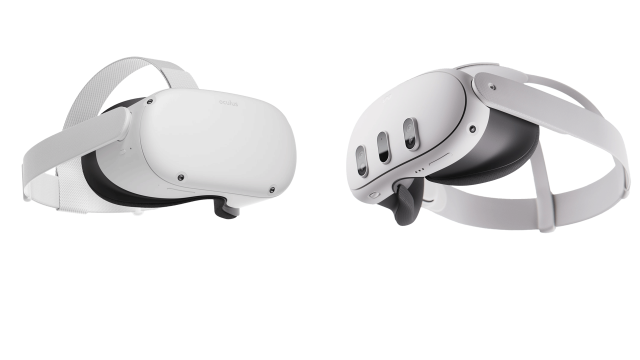
The News
Meta’s latest headset, Quest 3, launched this year to generally favorable reviews. But as ever, the company keeps improving its hardware while not doing much to move the platform’s core UX in a positive direction. Just like Quest Pro before it, Quest 3 was marketed with a big emphasis on its mixed reality capabilities, but with no killer apps or even core first-party software that takes advantaged of it.
The price of Quest 2 has had quite a journey over the course of its three years of life so far. With the base model originally launched at $300 in 2020, its price was later raised to $400 in 2022. Then in 2023 it the price returned to $300. And in time for the holiday Meta dropped the price further still, down to $250.
Even at three years old, the quality of the hardware and content library has kept Quest 2 relevant, and bringing the price down to $250 makes the headset undoubtedly the best value as an entryway into VR.
And due to that practically unbeatable price, Quest 2 appears to have significantly outsold its newer and pricier sibling, Quest 3 (which starts at $500). Signals from Amazon suggest Quest 2 may have outsold Quest 3 nearly 3:1, if not more.
What it Means for 2024
Quest 2 is more than three years old, but Meta has updated the headset with significant improvements over the course of its like—like improved tracking and faster performance. As far as we know Quest 2 represents the vast majority of active VR headset usage in the market today.
An influx of hundreds of thousands of new Quest 2 users spurred on by holiday shopping and the price drop to $250 is likely going to extend the headset’s lifespan as developers continue to primarily target Quest 2 over Quest 3 throughout the course of 2024.
While selling headsets seems like a very good thing for Meta, at $250 the company is almost certainly losing money with each headset sold. The company needs people to not just buy, but to keep using their headsets in order to recoup the subsidized hardware. Meta has struggled with this retention problem for a long time. Granted, Quest 2 is in a better place today from a performance and content standpoint than it was when it first launched. But I can’t say there’s been enough improvements to the overall UX and content pipeline to solve the retention issue.
The continued popularity of Quest 2 also presents another problem for Meta; the company seems all-in on mixed reality, and is pushing it as the key selling point for both Quest Pro and Quest 3. But with what’s likely to be a much larger market of Quest 2 users (which has barely passable mixed reality capabilities), developers have little reason to make big bets on mixed reality applications. And without a critical mass of killer apps for mixed reality, the purported value of MR on Quest Pro and Quest 3 falls short.
Between Quest 2, Quest Pro, and Quest 3, Meta has seemingly created something of a product positioning problem for itself. And while Apple Vision Pro can’t pounce on that opportunity (because of its $3,500 price), the clock is ticking for Meta to figure out exactly which direction it wants to push its users and developers.
Continue on Page 2: Samsung, Google, & Qualcomm’s Collaboration »
,
Samsung, Google, and Qualcomm Collaborating an XR Device
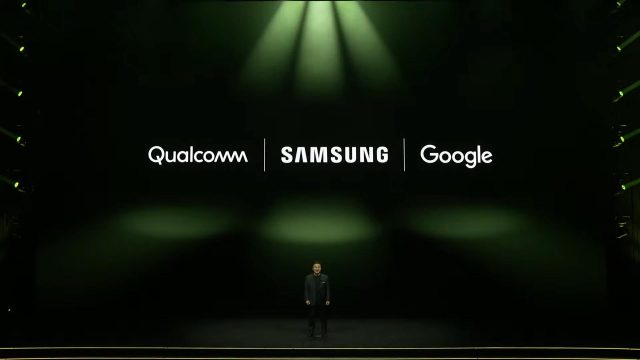
The News
In early 2023 Samsung formally announced that it was collaborating with Google and Qualcomm to build some kind of XR device, but revealed no additional details.
What it Means for 2024
We still don’t know exactly what Samsung and Google are building, but there are signs that the device will be revealed (if not launched) in 2024. This marks a re-entrance into XR for both Samsung and Google.
Back in 2015 Samsung worked with Meta (at the time, Facebook’s Oculus division) to launch what was technically the company’s first consumer headset, Gear VR. The mobile-phone based headset saw several iterations over the years and reportedly moved millions of units, but for a wide range of reasons people didn’t continue to use the headsets and Samsung and Oculus abandoned the phone-based form-factor. Samsung was also one of a handful of hardware makers to build a Windows Mixed Reality headset in collaboration with Microsoft. But that venture was eventually disbanded.
Google was also pretty early in the XR space and in 2016 launched its own phone-based VR headset, Daydream View. Similar to Samsung, the device saw a few iterations but usage didn’t persist and Google abandoned the effort in 2019. Google also acquired key early PC VR studios—those behind Job Simulator and Tilt Brush—and even launched a PC VR version of Google Earth. All of which have been left to wither except for Owlchemy Labs, the Job Simulator studio, which continues to make VR games today.
Given this string of abandoned XR attempts, we can be sure that both Samsung and Google would not be re-entering this space lightly.
Very likely the move itself and the timing is a somewhat forced effort to try to keep Apple from taking an early foothold over Android in the XR space. The big question on my mind is if Samsung and Google have internalized their prior misteps, or if that knowledge has been scattered as past XR projects were abandoned?
Microsoft Officially Abandoning Windows VR
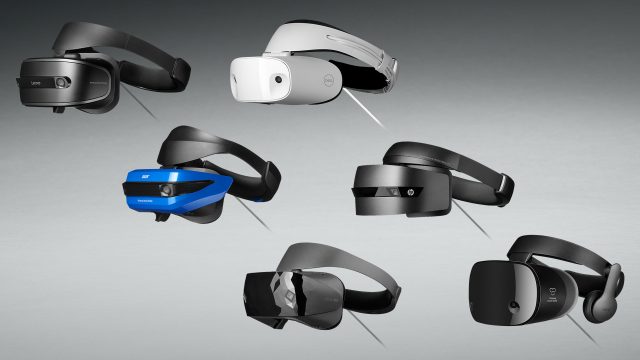
The News
Microsoft announced that it plans to remove support for its entire WMR platform on Windows, which will make Windows VR headset incompatible with future versions of Windows.
What it Means for 2024
Just as rivals Samsung, Google, and Apple are all jumping into XR, Microsoft is dropping out. At least that’s the case for its Windows Mixed Reality platform.
Since the company announced that Windows Mixed Reality will be deprecated we’ve learned that Windows Mixed Reality and Windows VR headsets will continue to work at least until late 2026 for consumers and late 2027 for enterprise customers. At which point Windows Mixed Reality software will no longer be available for download. That will mean Windows VR headsets that are already set up will remain functional (though officially unsupported) until users update to a version of Windows that doesn’t include Windows Mixed Reality.
Considering that Windows Mixed Reality headsets make up only about 5% of the PC VR market and they will continue to work normally until late 2026, the impact for 2024 will be minimal.
As Windows VR is left to wither, it remains to be seen if Microsoft will press ahead with HoloLens 2 or eventually abandon that platform as well.
Meta VR Content Revenue Slows as it Continues to Invest Billions in XR
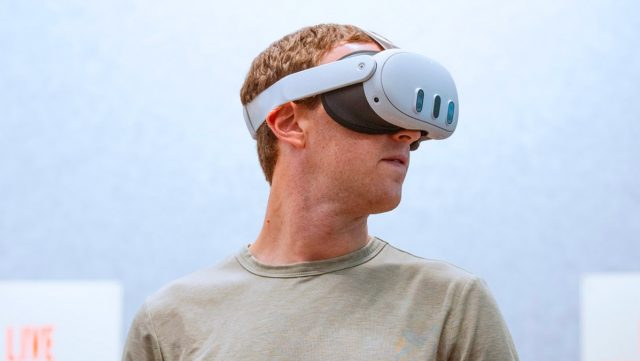
The News
Meta revealed that Quest Store games and apps have generated over $2 billion in revenue as of October 2023. While the store is still earning for developers, looking at revenue over time shows that things have cooled off compared to prior years.
And despite being the leading force in XR today, the Meta still isn’t even close to turning a profit overall from the investments it’s making in its XR division, Reality Labs. In late 2023 the division hit is lowest quarterly revenue since it began reporting that figure.
What it Means for 2024
As of its last quarterly update, Meta has spent a staggering $43.5 billion on Reality Labs. And even when you count what it has earned back, the division is still in the red by $37.5 billion. While many of those investments surely haven’t manifested into marketable products yet, there’s only so long that investors will tolerate investments that aren’t seeing near-term returns. And even for a nearly trillion-dollar company, $37.5 billion is nothing to sneeze at.
We won’t know for a while yet how well the 2023 holiday season looks for Reality Labs (Q4 has always been is strongest quarter), but my gut feeling is that it won’t be materially different when compared to the division’s track record overall.
Every quarter that goes by without Reality Labs justifying the money it’s spending will mean more pressure from investors. This puts Meta in a curious place… on the off chance that Vision Pro is a flop, it could be the last straw that makes the company’s investors fully turn against the existence of Reality Labs.
Purely from the perspective of the company’s other activities, Meta has yet to find real mainstream traction with its XR products. And with Meta’s continued struggles to make its XR products and services easy and appealing enough for the mainstream, there’s no reason to think that will change in 2024.
Valve Launches SteamVR 2.0 and Steam Link on Quest, Bolstering Rumors of a New VR Headset in the Works
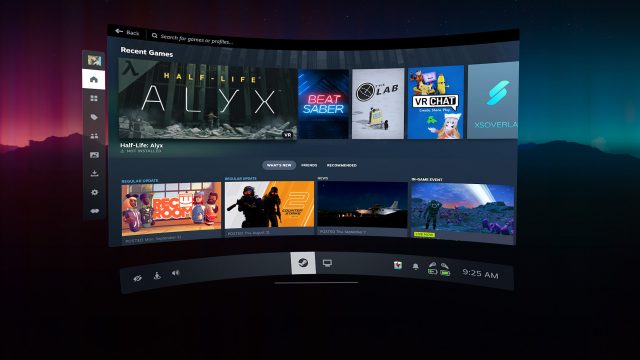
The News
After a period of near complete silence about the company’s XR plans following the launch of its Index VR headset and Half-Life: Alyx, Valve bust back onto the scene in 2023 with the launch of SteamVR 2.0. This long-promised update went a long way toward modernizing the SteamVR interface while adding Steam platform features that were previously missing.
And not long after, Valve launched Steam Link on Quest, allowing customers an easy and direct pathway to play SteamVR content on their headset without going through the long-forgotten Oculus PC software layer.
What it Means for 2024
Valve works in mysterious ways and it has always been difficult to predict exactly what they’ll do next—there’s not a whole lot of software companies out there that also make VR headsets and handheld gaming PCs.
Valve’s latest moves have shown that the company hasn’t given up on VR. And that gives new meaning to its long-rumored followup to Index, which has become known as ‘Deckard’. Deckard is said to be a wireless VR headset that would stream games from either a host PC or dedicated VR console.
With sales of the company’s Index headset finally starting to wane in 2023, Valve may feel renewed urgency to get its rumored headset out the door sooner rather than later.
What were your biggest XR stories of 2023 and what do you think is coming in 2024? Drop a line in the comments to let us know!
